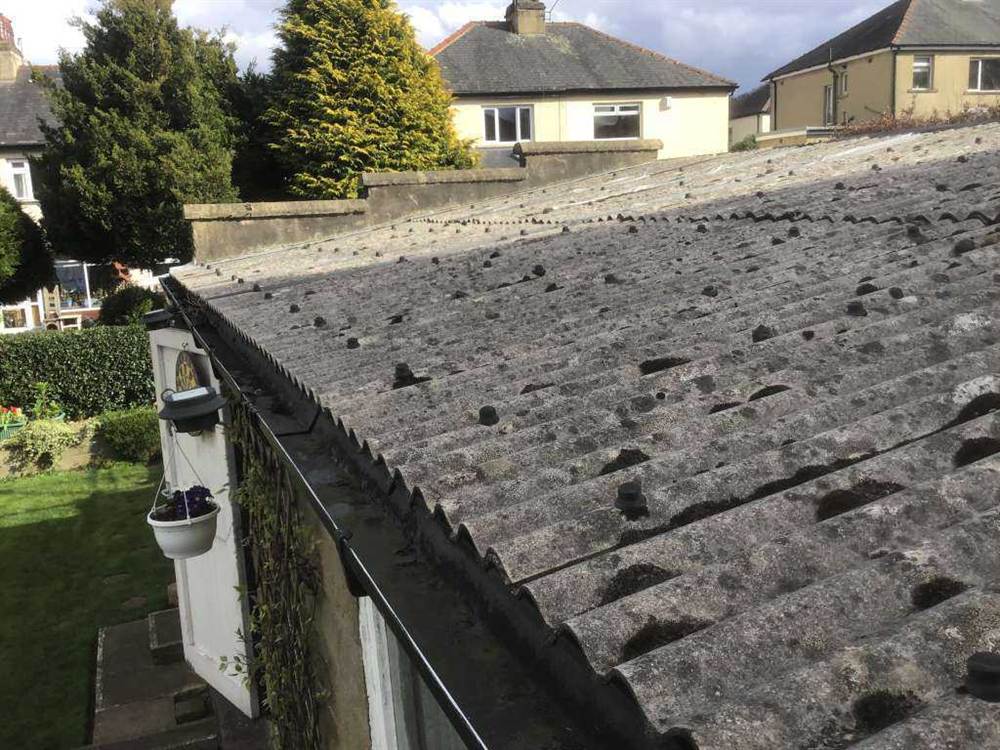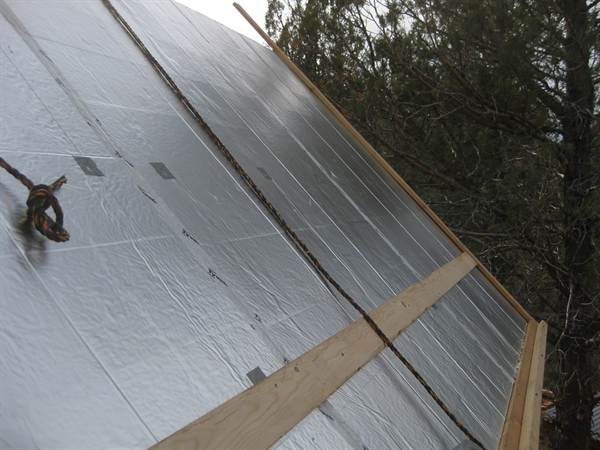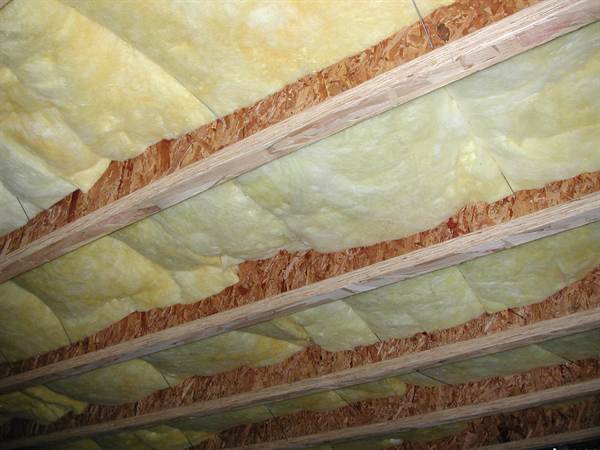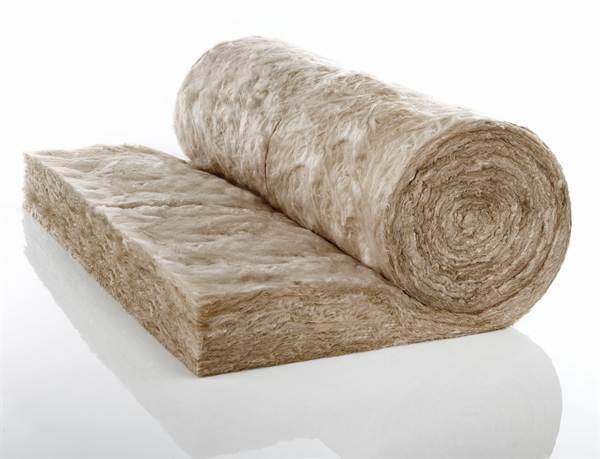The Ultimate Guide to Garage Roof Insulation

Are you planning on using your garage as a home workshop, studio, or office? You are going to want to make sure that it is kept warm and insulated if you will be regularly using your garage space.
Your garage roof is usually to blame if heat is escaping. That is because heat rises, leading to a cold garage that is uncomfortable to spend time in.
This ultimate guide to garage insulation will give you all of the practical tips and tricks we know at Danmarque Garages to improve insulation and turn your garage into a space that works efficiently for you.
We will cover:
- Why insulate your garage roof
- How to insulate the roof of your garage
- The best materials for insulating your garage roof
- The cheapest way to insulate the roof on your garage
Why Insulate Your Garage Roof?
A well-insulated garage makes for a comfortable garage, and it helps your space to be as efficient as possible. Let’s look at the top reasons why proper insulation material is required for your garage.
1. Temperature Control
Did you know that a poorly insulated garage can lead to heat loss? This will make it incredibly difficult to maintain a consistent temperature in your garage throughout the year. Cold air will find its way inside during the winter and leave your garage feeling freezing cold.
The summer is no better. Poor insulation means you may as well be standing inside an oven.
Insulating your garage roof helps reduce heat transfer. This helps you to keep your garage space warm in winter and cool in summer.
2. Condensation Management
One of the biggest problems in an uninsulated garage is condensation.
Moisture buildup in your garage happens when warm indoor air rises up and meets a cold roof. If this isn’t fixed immediately, the excess moisture will encourage damp and mould. All of this excess moisture will ruin all of the belongings you store in your garage and do damage to the roof and structure of the garage, too.
Condensation and temperature imbalance can be prevented or fixed with proper insulation.
3. Cost Savings
Heat loss means you will need to use more energy to heat and cool your garage. No one wants to be spending more and more money on their energy bills only for that extra heat to escape thanks to a lack of insulation.
Good insulation means that the energy you use isn’t going to waste, saving you money on your energy bills in the long run.
4. Comfort
Extreme temperatures are the last thing you want to be dealing with in your garage if you are going to be using it as a space to work or exercise. Even if your garage is just used for storage, you don’t want it to feel like a sauna every time you go in there to get something.
Insulation improves the thermal resistance of your garage to make the space more comfortable.
5. Protection for Belongings
Temperature fluctuations and air gaps can lead to condensation, and we already know that this can damage any tools, electronics, and other stored items in your garage.
Proper roof and garage wall insulation will help you to prevent moisture buildup and keep everything you store in your garage in good nick.
6. Noise Reduction
Good-quality insulation material can absorb sound. This means that insulating your roof helps block external noise from traffic or noisy neighbours while also containing noise from the inside. This can be a great help if you use your garage for any noisy work or hobbies (like DIY or practising your electric guitar).
Is it Worth Insulating Your Garage Roof?
Yes! Insulation is absolutely worth it, especially if you are going to be using your garage all year round. Without insulation, your garage will always be an uncomfortable temperature – too cold in the winter and roasting in the summer.
Improving the thermal efficiency of your garage with good insulation is the way to go to keep temperatures stable and is a perfect addition to any garage refurbishment.
Insulating your garage well will help you to keep your energy consumption down, too. We all want to improve the energy efficiency of our homes, and proper insulation helps you see off heat loss and make the most of energy savings throughout the year.
And don’t forget that insulation helps to prevent condensation. No one wants dampness, mould, or structural damage threatening to ruin their belongings.
Is Your Garage Roof Leaking or Damaged?
Get a quote to remove and replace your old garage roof with a 100% watertight roofing system.
How to Insulate a Garage Roof
1. Prepare the Roof
Clean the Roof

Remove any dust, cobwebs, or debris from the surface of your roof to make a smooth surface for insulation.
Check for Leaks, Cracks, or Damp
You need to fix any damage to the roof structure before you can insulate it properly. Air gaps or roof leaks will stop your new insulation from working as it should.
If you’re garage roof is leaking or damaged, or is made of asbestos, we recommend a garage roof replacement before installing insulation.
Easy Access
2. Determine the Insulation Thickness
You want insulation that is the right thickness for your garage roof.
You will need to work out the U-value to know the thickness you need. U-value is a way of measuring how well the insulation is going to stop heat loss. The lower the U-value, the better the insulation.
UK building regulations mandate roof insulation has a U-value of 0.16 W/m²K. You can use a free U-value calculator to work out the required insulation thickness. You can find one here.
The thickness of the insulation you will need is going to be different depending on the type of insulation material you use and if your garage roof is flat or pitched.
3. Choose the Right Insulation Method
Pitched Roof Insulation
Flat Roof Insulation
There are two different installation methods for a flat roof: warm or cold roof.
Warm Roof: This is our recommended way of insulating flat garage roofs. Here, insulation boards are installed above the roof deck. This helps to keep the roof structure warm and prevent moisture buildup and condensation. We find this is the best option for the long term.
Cold Roof: Here, insulation material is installed below the roof deck. This means that the roof above will stay cold. We don’t recommend this method as it can lead to air gaps, condensation, and dampness if you don’t ventilate it properly.
Considerations
When installing roof insulation, always:
1. Choose low R-value materials to improve the thermal efficiency of your insulation. (R-value just means how well materials resist heat flow)
2. Install a vapour control layer to help prevent any moisture buildup.
3. Make sure that you stay compliant with building regulations.
4. Wear protective gear!
Protect Your Garage Roof from Condensation for up to 35 Years
Our garage roofs come equipped with DRIPSTOP anti-condensation membrane as standard.
Best Materials for Garage Roof Insulation
You want to choose the right materials when insulating your garage. Of course, different materials will give you different benefits and results – and you will need to make your decision based on whether you have a pitched roof or a flat roof, or will be needing corrugated garage roof insulation.
Let’s take a look at your options:
Rigid Foam Boards

Rigid insulation boards are considered the best choice for garage roof insulation by many DIYers and professionals. They have both a high thermal resistance and moisture resistance, and they are relatively easy to install yourself.
Rigid foam boards are:
- Great for both pitched and flat roofs
- Made from PIR insulation (polyisocyanurate) which has great thermal performance.
- Easy to cut and install (great for DIY)
- Lightweight yet durable, lasting a long time
- Resistant to moisture absorption so you can avoid condensation and mould growth
Spray Foam Insulation

Spray foam insulation can be another good option, especially if you need to insulate any irregular areas or metal roofs. But, it does come with a few drawbacks.
Spray foam insulation:
- Expands on application to seal up air gaps and prevent heat loss
- Has good thermal performance
- Is great for guaranteeing complete coverage in hard-to-reach spaces
- Ideal for metal garage roofs
The downsides are that spray foam is expensive and will usually require professional installation. Once it is applied, it is really difficult to remove or alter it if you have made any mistakes – this makes it much less DIY friendly.
Fibreglass Insulation

Fiberglass insulation is made from fine glass fibres and is one of the most cost-effective options for garage insulation. But, it probably isn’t that great for the UK’s damp climate.
Fiberglass insulation is:
- Commonly used in pitched roof insulation
- Affordable and widely available
- Easy to install (good for DIY projects)
- A cheaper option than some of the alternatives
Fiberglass insulation is a good budget-friendly option. Be warned though that it probably won’t give you the best thermal efficiency or last as long as some of the other options. Fibreglass insulation also absorbs water, which (as we know) can lead to mould.
Cellulose Insulation
Cellulose insulation is a pretty good choice for homeowners looking for sustainable insulation material. It is made from recycled paper and has pretty good thermal performance and soundproofing properties.
Cellulose insulation is
- Environmentally friendly and usually made from recycled materials
- Useful for noise reduction from external sounds
- Works well in pitched roofs
Cellulose insulation is a green alternative, that’s for sure, but you should consider if it is the right choice for your garage. It isn’t ideal for flat roof installation, and it is also prone to moisture absorption.
Which Insulation Material is Best?
For most garages, you will probably want to go with rigid insulation boards as they provide the best balance of cost-effectiveness, energy efficiency, and moisture resistance.
If you want a premium solution (i.e., don’t mind the extra cost), spray foam insulation usually performs pretty well – but don’t make any mistakes.
Fiberglass insulation is a budget-friendly option. It won’t be great in damper climates like the UK, though, as moisture will impact its thermal performance.
Eco-conscious? Choose cellulose insulation.
What is the Cheapest Way to Insulate a Garage Roof?
The cheapest way to insulate the roof of your garage when you are on a budget is to use fibreglass insulation or polystyrene sheets. People choose them because they are cheap and widely available – but remember that they are not that great at stopping moisture buildup.
Rigid foam boards are a good option too. While they are more expensive than fibreglass, they prevent heat loss and will still help you save energy in the long run. DIY installation of insulation boards is a cost-effective alternative to professional spray foam insulation.
In the UK, there are some government grants and schemes that help homeowners looking to improve their loft or cavity wall insulation.
You may be able to get support to install other types of insulation – check the Gov.UK website for advice on how your energy supplier can assist you in finding insulation support after having your home assessed.
Natural Garage Insulation Methods
Repurpose Cardboard or Old Blankets
You can line your garage walls or roof with layers of cardboard or hang thick blankets or rugs for extra insulation.
Seal Cracks and Gaps
Remember that air leaks are one of the main causes of heat escaping in your garage. You can use beeswax or LS-X sealant to plug gaps and reduce drafts.
Use Carpets or Bed Sheets
You can lay old carpets or bed sheets on the floor. This helps stop cold air from rising and improve thermal performance by covering the garage floor – an easy and low cost alternative to garage heating.
Use Bubble Wrap or Tin Foil
Applying vapour control layers like bubble wrap to windows or large uninsulated areas can help to trap heat. Old metal sheets or tin foil can reflect heat back into the garage, too.
Final Thoughts
So, is insulating your garage roof worth the effort? Absolutely! Proper insulation is a smart investment if you want to use your garage year-round.
Proper insulation will help keep your garage and the belongings you store in there in the best condition possible. Do you seriously want to spend time in a stuffy garage that is filled with mould and damp? No. That’s why you should insulate your garage roof.
Choosing the right type of insulation for your garage will be different depending on the type of roof your garage has and what your budget is. There are budget-friendly and DIY options available as well, but we recommend rigid foam boards.
Opening Times:
9:00am – 5:30pm Monday to Friday
